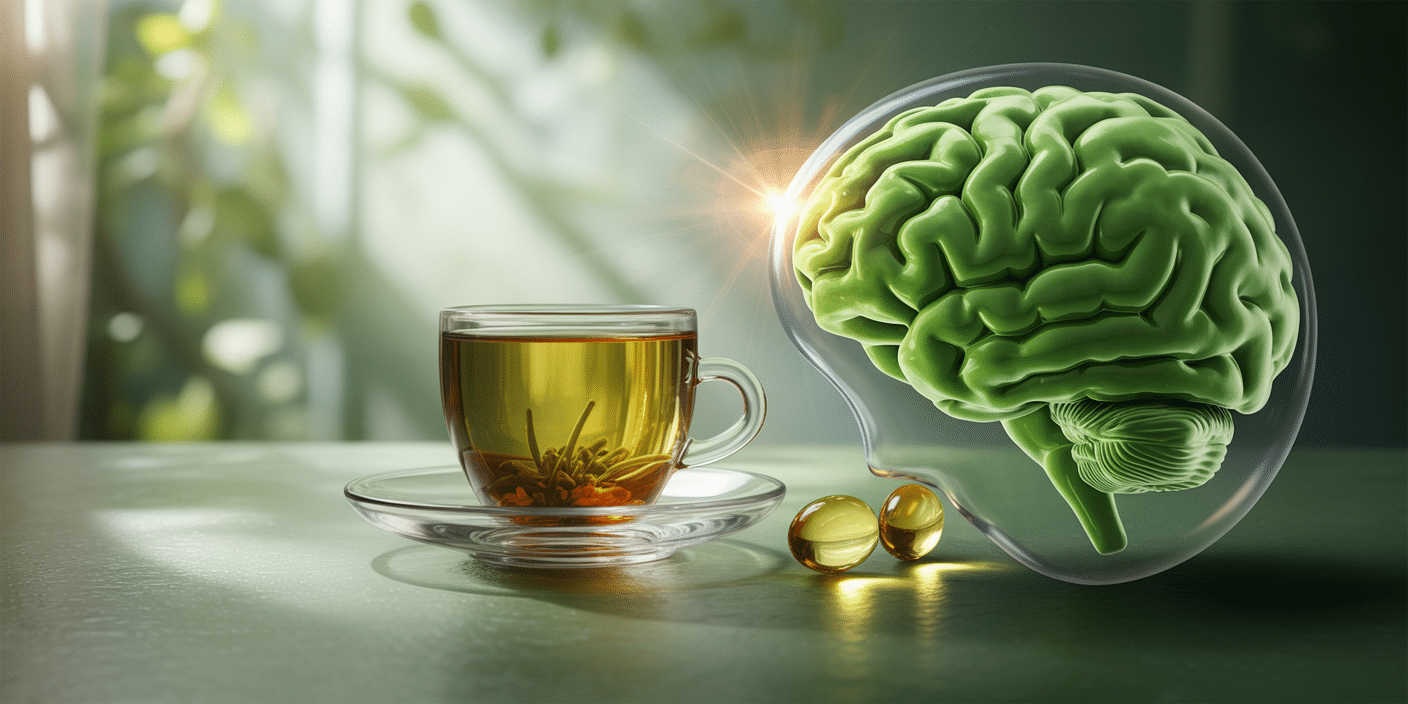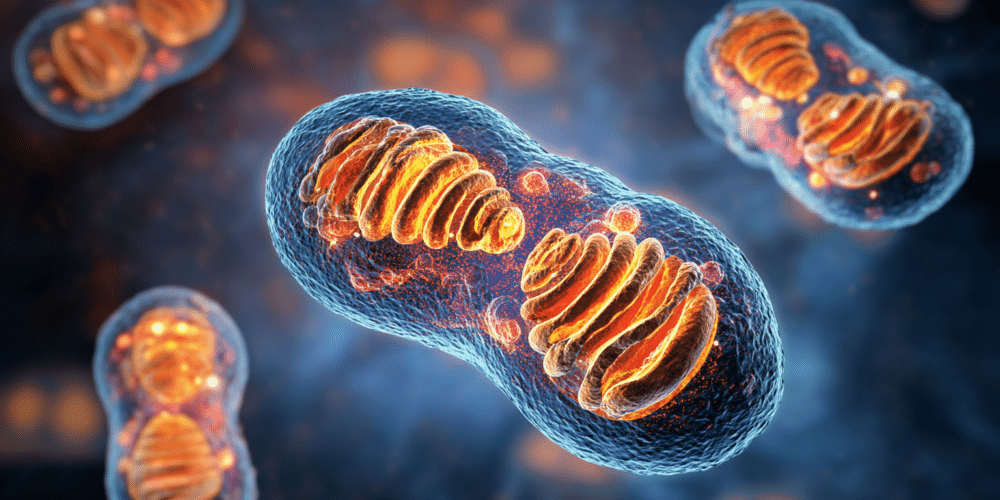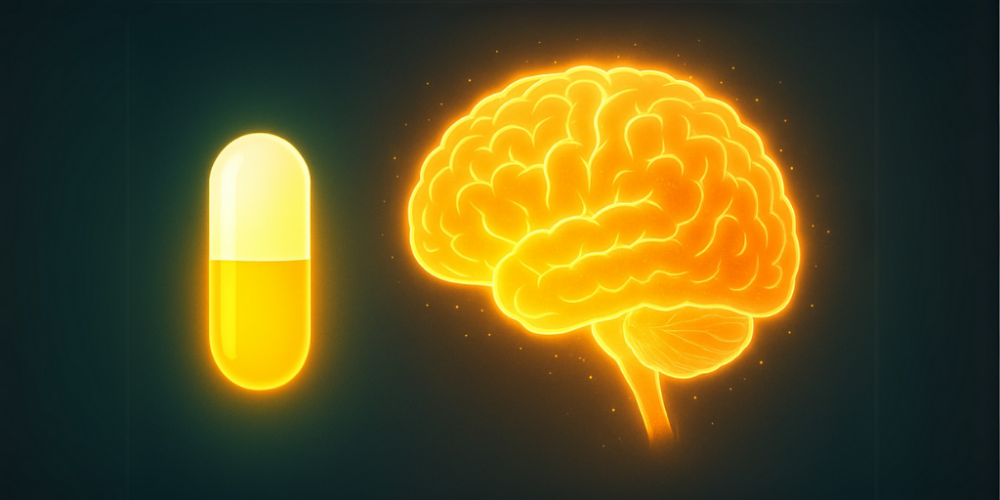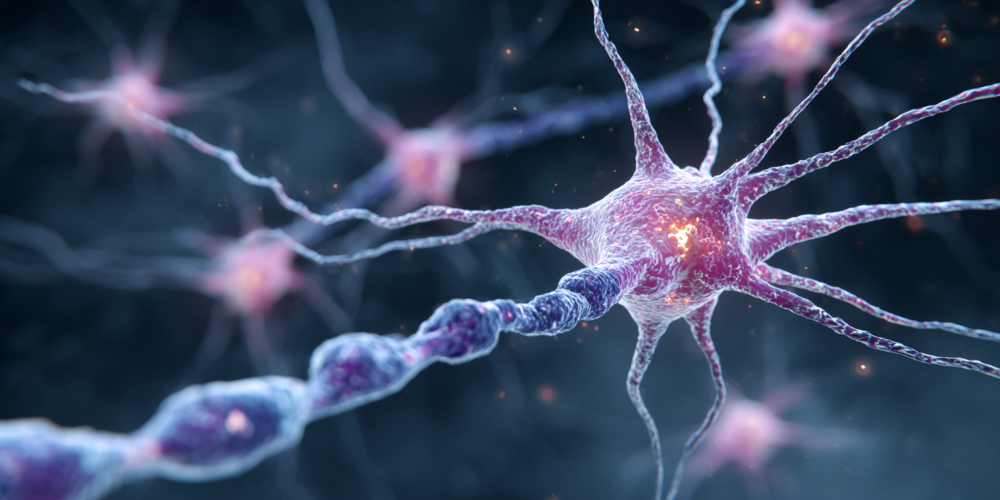
What if I told you that two common compounds, one a form of a B vitamin and the other the powerhouse antioxidant in your daily cup of green tea, could hold a new key to fighting the mechanisms of Alzheimer’s disease? It sounds almost too simple to be true, but exciting new research is pointing us in a fascinating direction, suggesting that this specific combination could help our brain cells fight back against the damage that leads to this devastating condition.
With Alzheimer’s disease affecting one in ten people over the age of 65 worldwide, the race is on to find effective ways to prevent, slow, or even reverse its progression. We’ve seen research on everything from diet and exercise to specific medications, but the world of supplements remains a hotbed of scientific inquiry. Now, a study from the University of California, Irvine, has put a spotlight on a powerful duo: Nicotinamide (a form of Vitamin B3) and EGCG (the main antioxidant in green tea). In this article, we’re going to take a deep dive into this groundbreaking research. We’ll explore what these compounds are, how they appear to work together to protect brain cells in a lab setting, and—most importantly—what this means for you and your brain health right now.
Key Takeaways
- A new laboratory study suggests that combining Vitamin B3 (as nicotinamide) and EGCG (an antioxidant from green tea) may help protect brain cells from Alzheimer’s-related damage.
- These compounds appear to work by tackling two key problems: restoring the brain cell’s declining energy supply and fighting off damaging oxidative stress, or “cellular rust.”
- By working together, this combination helped lab-grown neurons clear out the toxic amyloid plaques that are a hallmark of Alzheimer’s disease.
- It is crucial to understand that this research is in its very early stages. The study was performed on mouse brain cells in a petri dish, not in humans.
- You should always consult with your healthcare provider before starting any new supplement, as this is promising research, not a proven treatment.
1. The Growing Concern: Why We’re All Thinking About Brain Health

It seems like you can’t go a day without hearing about the importance of brain health, and for good reason. The statistics are sobering. Alzheimer’s isn’t just a disease of old age; it’s a progressive neurodegenerative disorder that slowly unravels a person’s identity, memories, and ability to function. For every individual diagnosed, there’s a network of family and friends whose lives are also profoundly changed. This personal impact is why the search for answers is so urgent.
So, what is actually happening in the brain during Alzheimer’s? In simple terms, it’s a story of communication breakdown. Your brain is made up of billions of neurons that talk to each other, forming complex networks that control everything you think, feel, and do. In Alzheimer’s, two toxic proteins run rampant. The first are amyloid plaques, which are sticky clumps of protein that build up between neurons, gumming up the works and blocking signals. The second are tau tangles, which are twisted fibers of another protein that build up inside the neurons, disrupting their internal transport system and ultimately killing them. As more and more neurons die, brain regions begin to shrink, leading to the symptoms we associate with the disease. This is why scientists are so focused on finding ways to stop these toxic proteins from accumulating.
2. The “Energy Crisis” in Your Aging Brain: Understanding GTP

To understand this new research, you first need to think of your brain cells like tiny, incredibly busy cities. Like any city, they need a constant and reliable power supply to keep the lights on, run the transportation systems, and manage waste disposal. For years, scientists have focused on the main “power currency” of the cell, a molecule called ATP (adenosine triphosphate). You’ve likely heard of it. It powers almost everything.
However, this new study shines a light on another, equally important energy molecule: GTP (guanosine triphosphate). Think of GTP as a specialized power source, like the dedicated energy grid for the city’s most critical infrastructure. In the brain, GTP is essential for powering processes that allow neurons to grow, communicate, and, most importantly for our topic, transport and clear out damaged proteins and cellular waste. The problem is, just like our own energy levels can dip as we get older, the levels of GTP inside our brain cells also naturally decline with age. This creates an “energy crisis” at the cellular level, leaving neurons vulnerable and less able to perform their essential maintenance tasks.
3. When the Brain’s “Garbage Disposal” Breaks Down

What happens when a city’s power grid fails? The garbage collectors can’t fuel their trucks, and trash starts piling up in the streets. A similar thing happens in your brain cells when GTP levels fall. The cell’s critical waste-disposal system, a process known as “autophagy” (which literally means “self-eating”), grinds to a halt. Autophagy is your brain’s housekeeping service. It’s a natural, regulated process where cells break down and recycle old, damaged, or unnecessary components, including misfolded and toxic proteins.
This is where the connection to Alzheimer’s becomes crystal clear. One of the main pieces of “garbage” that autophagy is responsible for clearing out is the very amyloid protein that forms those toxic plaques. When GTP levels are low, autophagy becomes sluggish and inefficient. The amyloid proteins aren’t cleared away effectively. They begin to accumulate, clump together, and form the plaques that disrupt neuronal communication and contribute to cell death. Therefore, the researchers in this study asked a logical question: if we could find a way to restore the GTP energy supply, could we get the brain’s garbage disposal system working again to clear out the amyloid trash?
4. The First Hero: Vitamin B3 (Nicotinamide) to Power Up Your Cells

Enter the first part of the dynamic duo: nicotinamide, a specific form of Vitamin B3. You might know Vitamin B3 (or niacin) as an essential nutrient for converting food into energy. Nicotinamide plays a slightly different, but incredibly vital, role. Its main job in this context is to boost the levels of another superstar molecule called NAD+ (nicotinamide adenine dinucleotide).
If GTP is the specialized power source, NAD+ is the master controller of the entire power plant. NAD+ is a fundamental coenzyme found in every cell in your body, and it’s crucial for metabolism, DNA repair, and cell signaling. Critically, it is a necessary ingredient for producing both ATP and GTP. Just like GTP, our NAD+ levels plummet as we age—by the time you’re 50, you may have only half the NAD+ you had in your 20s. This decline is considered a hallmark of aging and is linked to a wide range of age-related diseases. By introducing nicotinamide, a direct precursor to NAD+, the researchers hoped to refuel the entire energy production line, giving the cells the raw materials needed to crank out more GTP and get back to work.
5. The Second Hero: EGCG from Green Tea to Fight “Brain Rust”

Restoring energy is only half the battle. An aging brain, especially one affected by Alzheimer’s, is also under constant attack from something called oxidative stress. The best analogy for this is rust. Just as iron rusts when exposed to oxygen, your cells can be damaged by unstable molecules called free radicals. This “cellular rust” damages everything it touches—DNA, fats, and proteins—and creates inflammation. In Alzheimer’s, this process is in overdrive.
This is where the second hero, EGCG (epigallocatechin gallate), comes in. EGCG is the most abundant and powerful antioxidant found in green tea, and it’s responsible for many of tea’s famed health benefits. Its role in this study was to act as a shield. EGCG is a potent antioxidant that directly neutralizes free radicals, but it also does something more sophisticated. It activates a protective pathway in the cell known as Nrf2. You can think of Nrf2 as the cell’s fire chief. When it senses the “smoke” of oxidative stress, it sounds the alarm, telling the cell to produce its own army of protective antioxidant enzymes. So, EGCG not only fights the fire itself but also equips the cell to better defend itself against future attacks.
6. The Power of Synergy: What Happened When They Were Combined?

The real magic in this study happened when the researchers combined the two compounds. They treated mouse neurons—which were specifically bred to develop Alzheimer’s-like characteristics—with both nicotinamide and EGCG. The results were remarkable. It was a perfect one-two punch:
- Energy Restored: The nicotinamide did its job, boosting NAD+ and restoring the depleted GTP levels. The cellular power plant was back online.
- Damage Reduced: The EGCG went to work, reducing the levels of oxidative stress and protecting the neurons from “rust.”
- Cleanup Crew Reactivated: With energy restored and damage controlled, the autophagy process—the cellular garbage disposal—kicked back into high gear.
- Plaques Cleared: Most impressively, the reactivated neurons were significantly better at clearing out the harmful amyloid proteins.
- Neurons Survived: As a result of all this, the treated neurons were healthier and survived longer than the untreated cells.
The key here is synergy. The Vitamin B3 provided the fuel for the cleanup, and the EGCG protected the cleanup crew while they worked. It’s a beautiful example of how different compounds can work together to address a complex problem from multiple angles.
7. Hold On! Important Caveats Before You Act
Now, this is the part of the conversation where we have to take a big, collective deep breath. While these results are incredibly exciting from a scientific perspective, it is absolutely critical to put them in context. This is promising research, not a proven treatment.
First and foremost, this study was done in vitro, which is Latin for “in glass.” The experiments were performed on isolated mouse neurons in a petri dish. A living human body is infinitely more complex than a collection of cells in a dish. What works in a lab doesn’t always work in a person.
Second, and this is a major hurdle, is the delivery problem. The lead author of the study pointed out that previous human trials using these compounds orally have not been successful. Why? Because when you swallow them, your digestive system and liver break them down so quickly that they don’t reach the brain in high enough concentrations to have a meaningful effect. Researchers are actively working on new delivery methods—like nanoparticles or different formulations—to overcome this, but we are not there yet.
So, while it might be tempting to rush out and stock up on Vitamin B3 and green tea extract, it’s not the answer right now. This research provides a vital roadmap for future studies, but it’s a first step on a very long road.
Conclusion
This new research offers a fascinating glimpse into the cellular mechanics of Alzheimer’s and presents a potential new strategy for fighting back. The synergistic combination of nicotinamide (Vitamin B3) and EGCG (from green tea) to restore cellular energy and fight oxidative stress is a brilliant approach that proved successful in a laboratory setting. It reinforces the idea that the future of treating complex diseases may lie in combination therapies that tackle the problem from multiple sides.
However, we must remain patient and let the science lead the way. Further studies are needed to confirm these findings in living animals and, eventually, in human clinical trials with effective delivery systems. While we wait for that science to mature, the best things you can do for your brain are the tried-and-true strategies we already know work: eat a balanced, nutrient-rich diet, engage in regular physical activity, prioritize getting quality sleep, and keep your mind active and socially engaged. And as always, the most important step before considering any new supplement is to have a conversation with your healthcare provider to discuss what’s right for your individual health.

